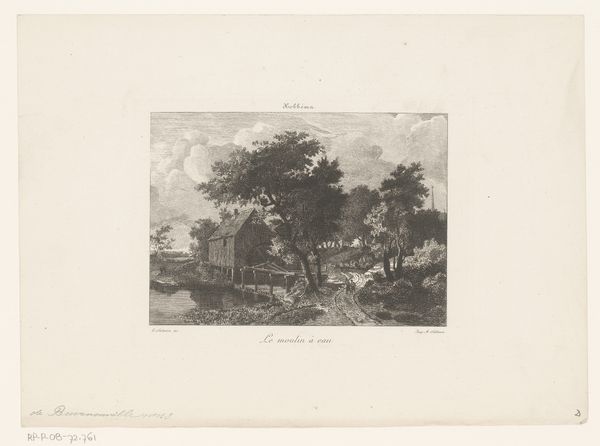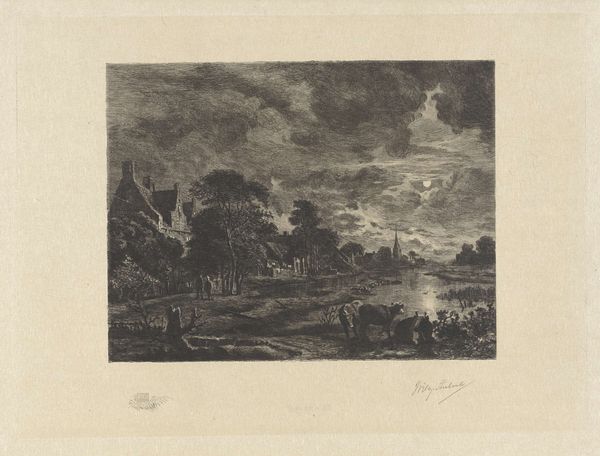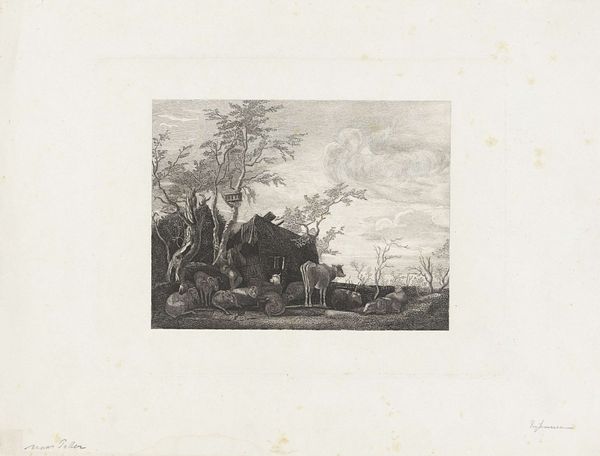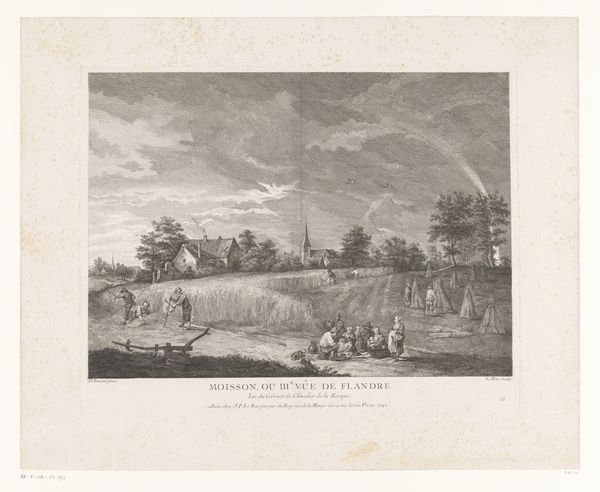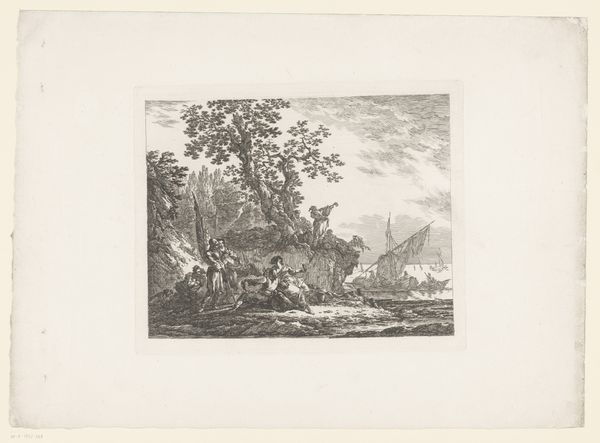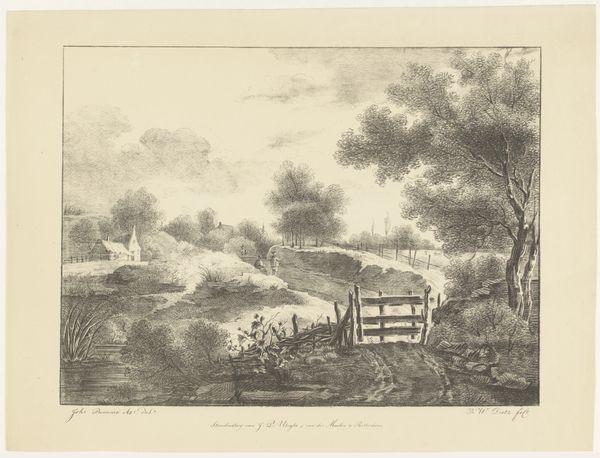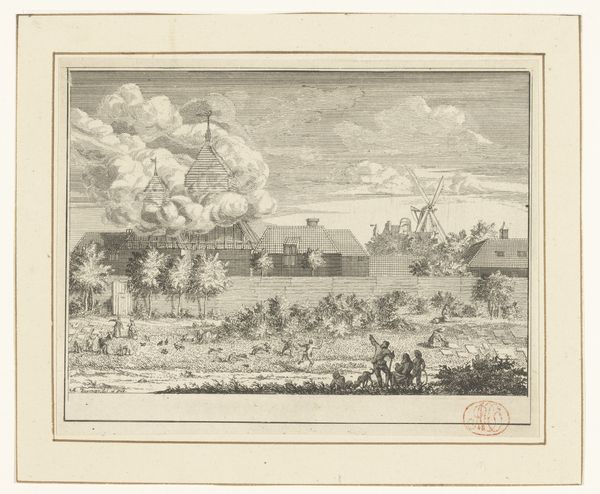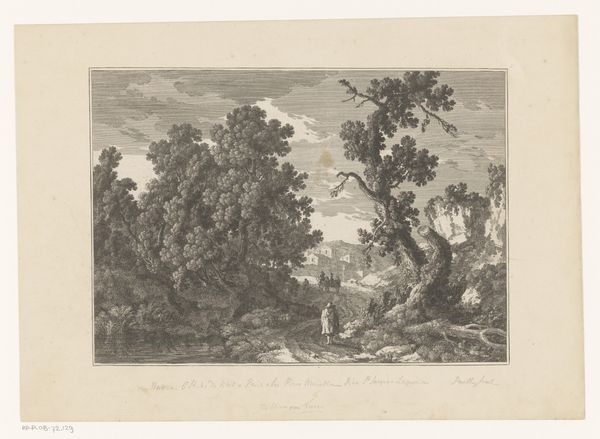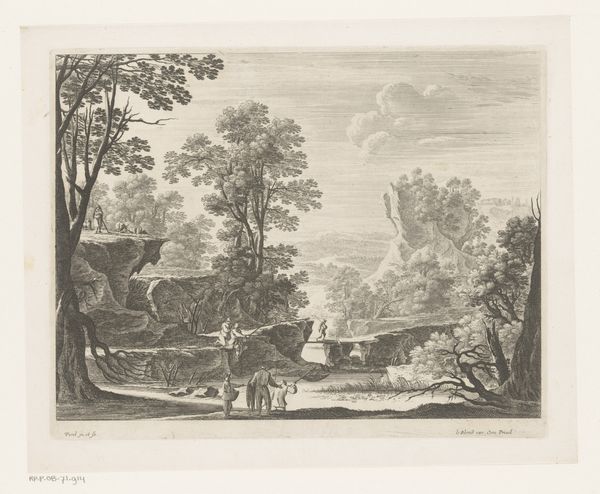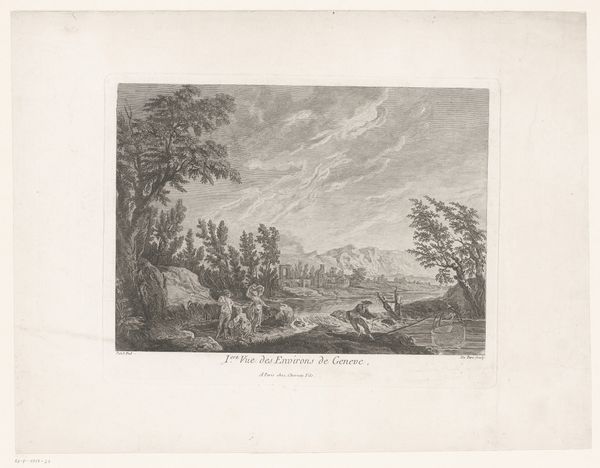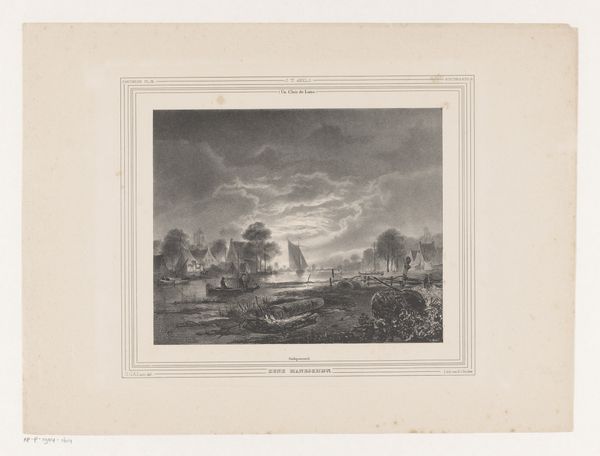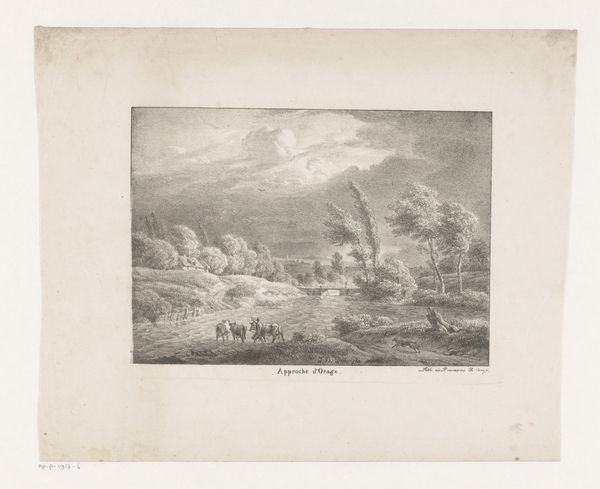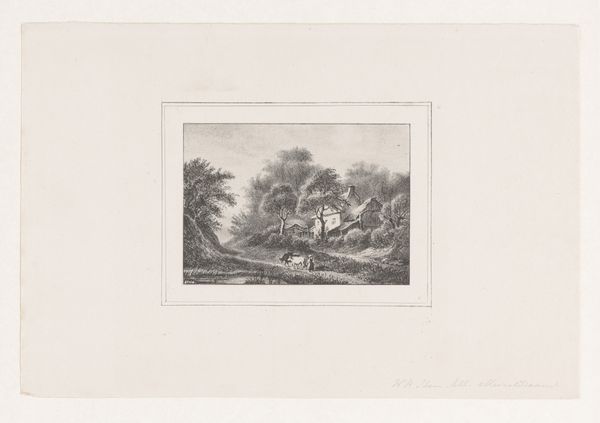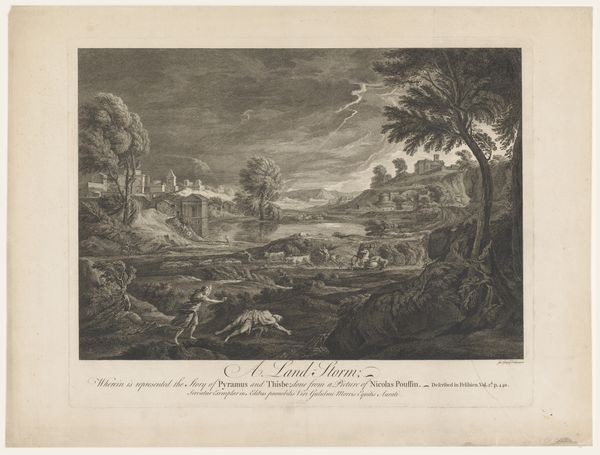
print, etching
# print
#
etching
#
landscape
#
river
#
realism
Dimensions: height 164 mm, width 224 mm
Copyright: Rijks Museum: Open Domain
Curator: This is Léopold Flameng’s "Rivierlandschap," created in 1874. It's an etching, showcasing his mastery of the printmaking process. What are your immediate thoughts? Editor: It feels melancholic, almost brooding. The sky seems heavy with impending rain, even though there's a delicate beauty in the details. There's something inherently romantic, yet grounded in a working-class setting. Curator: Interesting. The social context is crucial here. Consider how etchings like this would have been produced. They’re reproducible, which makes them accessible, even democratic in a way. They made landscapes like this viewable for wider audiences beyond the wealthy who owned original paintings. Editor: I hadn't considered that, the process influencing the reception. It really invites you to examine its social underpinnings – who made it, for whom, and under what conditions. It makes me think about artistic labor and commerce, especially as a 'realistic' rendering. Curator: Precisely. Flameng was very skilled. If you look closely at the texture of the water and the leaves, you see incredible precision achieved through acid and metal. He captures light reflecting on the water's surface, the density of the foliage, and the textures of daily rural life. Editor: And those little figures! Barely there, almost absorbed by the land. Do you think the river provides some metaphor about movement, transition? Maybe a social allegory of individuals passing from one state of life into another? Curator: Perhaps. I am reminded how these kinds of landscape print etchings were collected by a burgeoning middle class, adorning domestic interiors, becoming a form of cultural capital, signifying status through appreciation for art and the natural world. The river may suggest a conduit between the town and country life they enjoyed to imagine. Editor: It becomes about owning a piece of that romantic view, right? Almost like pre-packaged experience that can be distributed. I guess for me, stepping back from that element of consumerism and accessibility, there’s just still a timeless quality to this piece that still speaks. Curator: It remains beautiful despite knowing its place within industrial society. Flameng reminds us how essential artistic labor can be. Editor: Well said. I feel like I'm walking away with a broader understanding of landscape’s social dimensions in a reproduced print. A quiet little piece with much to say.
Comments
No comments
Be the first to comment and join the conversation on the ultimate creative platform.
